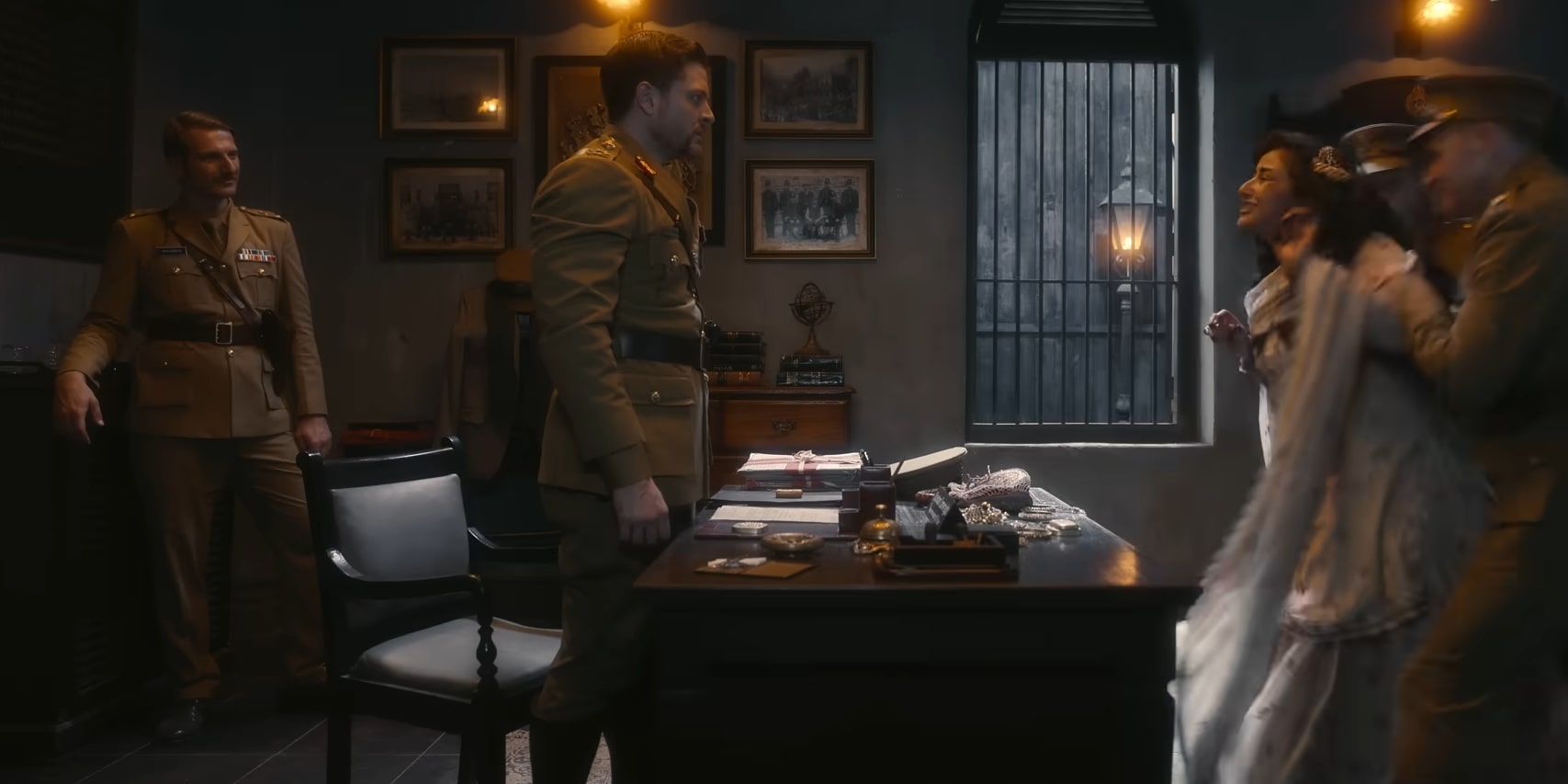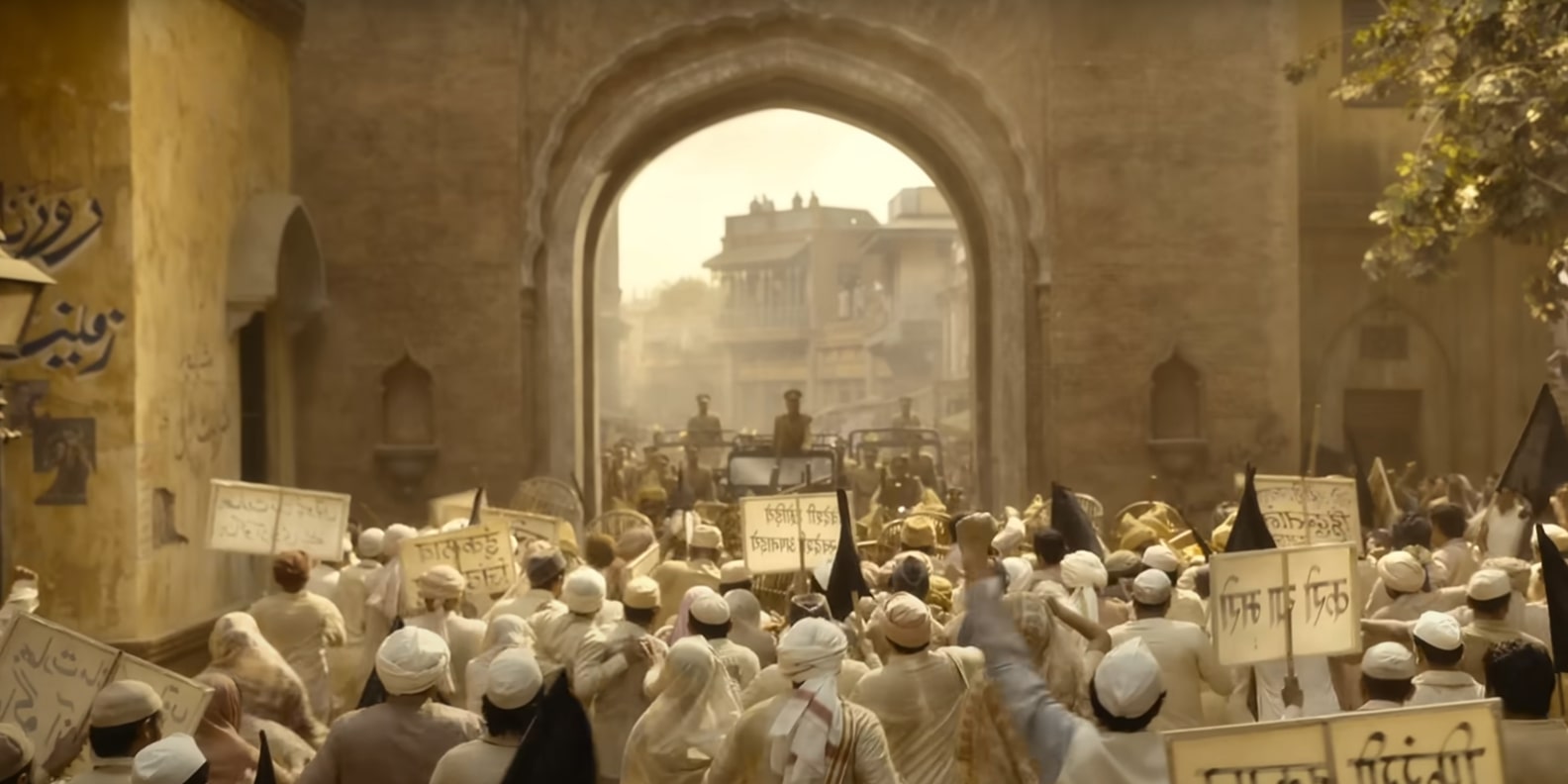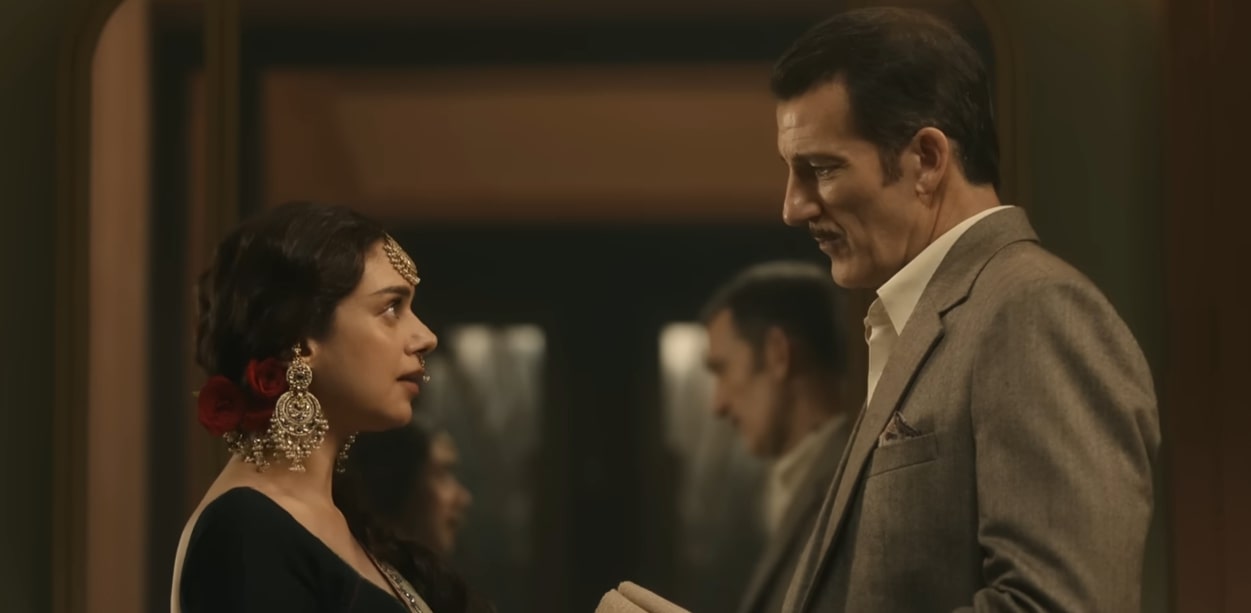From the mind of Sanjay Leela Bhansali, ‘Heeramandi: The Diamond Bazaar’ narrates a riveting tale of courtesans, their rivalries, romances, and aspirations, set against the backdrop of colonial India. The story pivots around the rivalry of Mallikajaan and Fareedan, two courtesans running competing entertainment establishments and sharing a tumultuous past. Largely taking place in 1940s Lahore, the Netflix period drama features British officers as a part of its narrative. Chief among them are Superintendent Alastair Cartwright and General Samuel Henderson. Cartwright is a vindictive and cruel enforcer who has been ordered to root out the radical freedom fighters and revolutionaries by Henderson.
The officers maintain a rapport with the local nawabs, who serve as instruments of governance for the British colonial administration. They are often invited to parties and events, with Cartwright becoming embroiled in the politics of Heeramandi. When Mallikajaan insults Cartwright by refusing to arrange a performance for his party, he teams up with Fareedan to take revenge on her. Cartwright and Henderson become integral to the story of ‘Heeramandi: The Diamond Bazaar,’ serving as the ultimate adversaries for the protagonists.
Cartwright and Henderson Represent the Complexity of British Rule in India
The fictional characters of Cartwright and Henderson depict the multifaceted British rule in India. The officers admire and partake in the local culture and festivities, sharing cordial relationships with the local elite. On the other hand, they helm an oppressive regime that cracks down on any signs of dissent, ill-treats its prisoners, and uses existing rivalries to further their own interests.

In the series, these characteristics are displayed as Henderson orders Cartwright to catch the freedom fighters, and he tortures Tajdar to death when he refuses to divulge any information. Cartwright also benefits from the rivalry between Mallikajaan and Fareedan, undermining the power and dignity of the former by colluding with the latter, much like the British East India Company did for taking down powerful Indian states. Henderson also uses popular arguments made by the colonial administration of the time, talking about contributing to the development of Indian territories and how the British saved India from Hitler.
Local elites like the nawabs seen in the show were largely against the Indian National Congress (INC) and the independence of India, as they were afraid of losing their stature and power without the support of the British. Instead, they supported the Unionist Party, which sought to remain a part of the British Empire. Moreover, Cartwright and Henderson’s interactions with local nawabs underscore the intricate web of alliances and power dynamics that served as the bedrock of British colonial rule. The nawabs, serving as intermediaries between the British administration and the local populace, wielded influence and authority in their respective domains while collaborating with British officers like Cartwright and Henderson.
While the behavior and atrocities of Cartwright and Henderson line up with some broad characteristics of the British Raj, there are some discrepancies when comparing historical timelines. The period the series depicts is largely between 1945 and 1946, the years leading up to India and Pakistan’s independence in August 1947. Historically, the political environment in Lahore was tense with talks of partition. At this time, British police officers were less afraid of violence against the government and more worried about religious violence over the partition, leading to a complete collapse of law and order. Under Viceroy Mountbatten, the administration had laid out a detailed plan to evacuate British citizens from Indian territories, including Lahore, in such a scenario.

While a police superintendent like Cartwright was assassinated by the Indian freedom fighter Bhagat Singh, no high-ranking officials like Henderson were killed by revolutionaries. The Indian freedom struggle was a largely peaceful one, and even radical factions like the Hindustan Socialist Republican Association (HSRA) refrained from senseless acts of violence. Furthermore, such acts, especially those nearing independence, like the 1946 Royal Indian Navy mutiny, were heavily criticized by popular INC leaders such as Mahatma Gandhi and Jawaharlal Nehru. If the show’s events had actually taken place, the radical assassination of General Henderson by Hamid Mohsin Ali and Bibbojan would have been lamented by Gandhi and Nehru for jeopardizing the final talks of independence with Viceroy Mountbatten.
Read More: Heeramandi: Is Hazoori Bagh Patrika a Real Newspaper?






